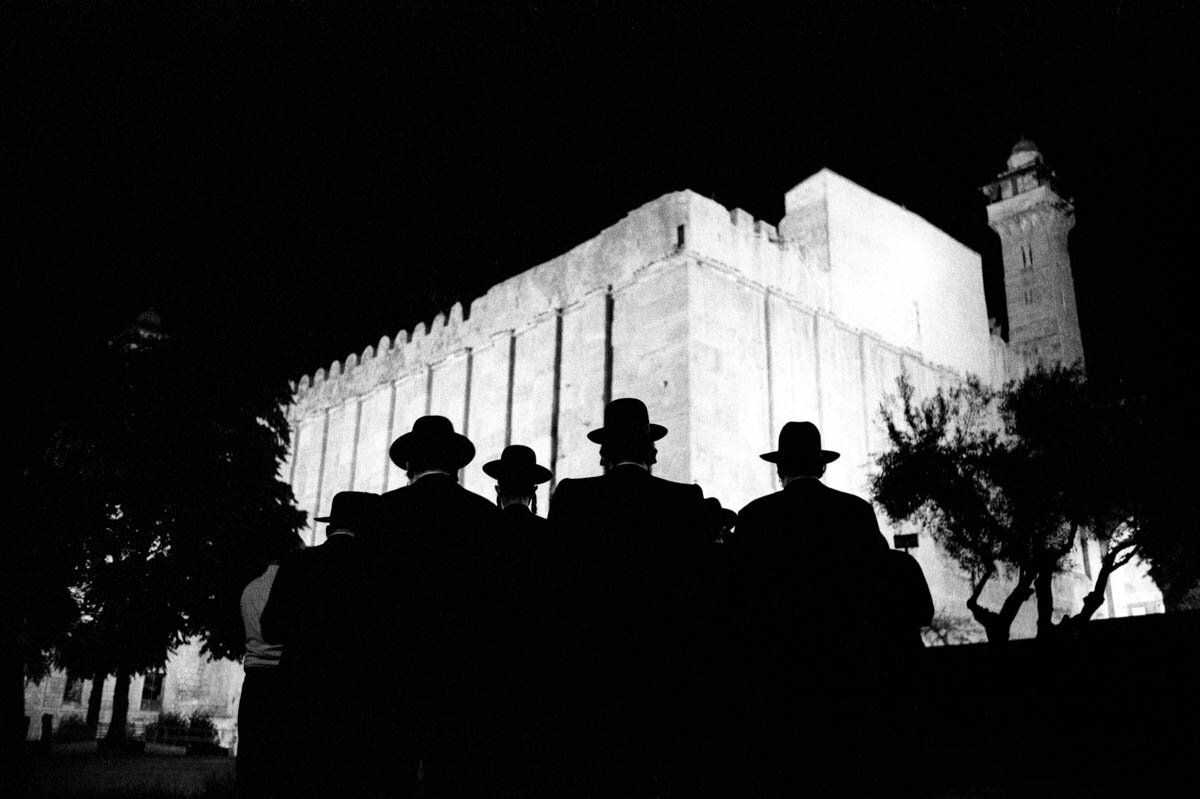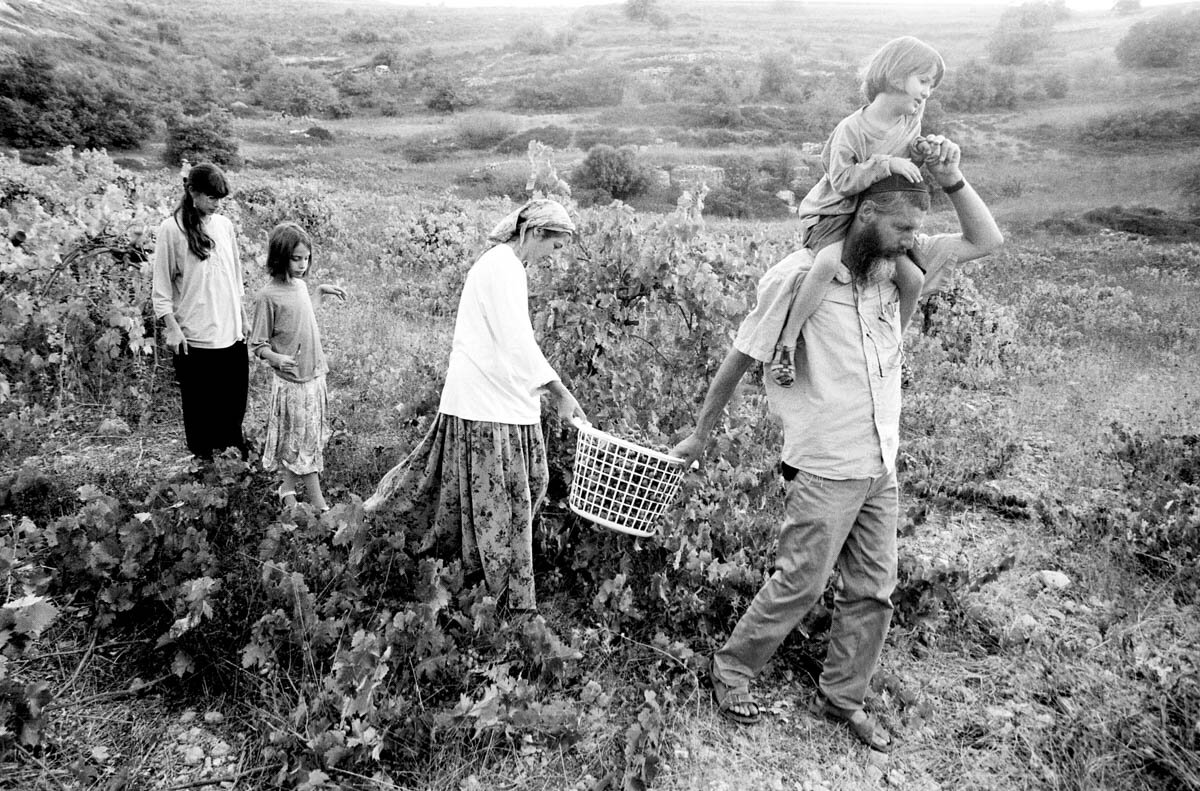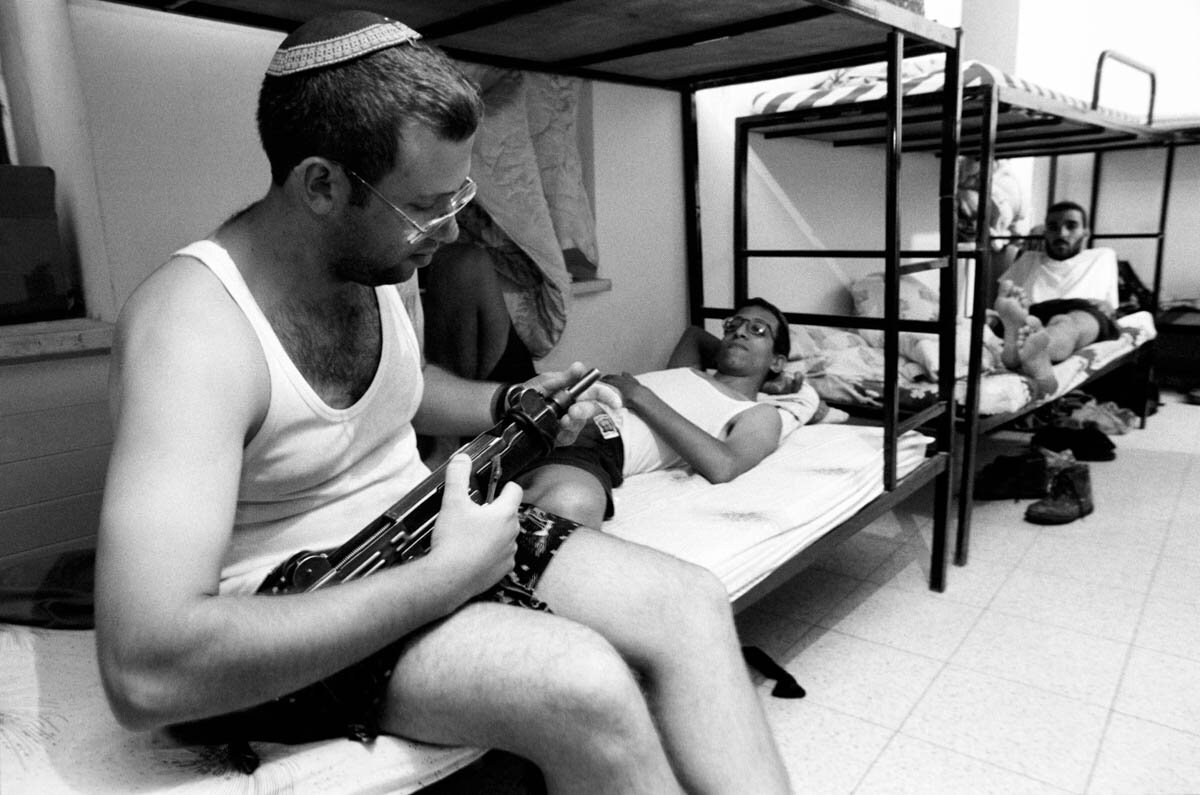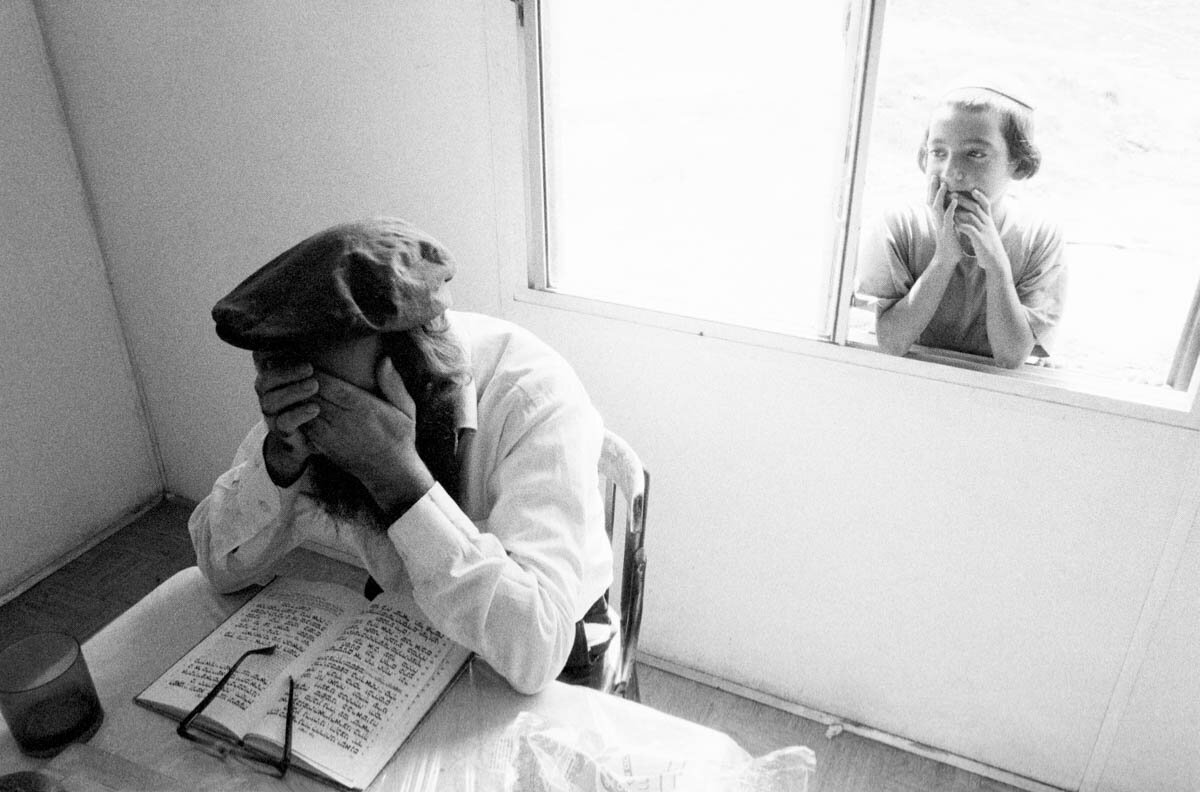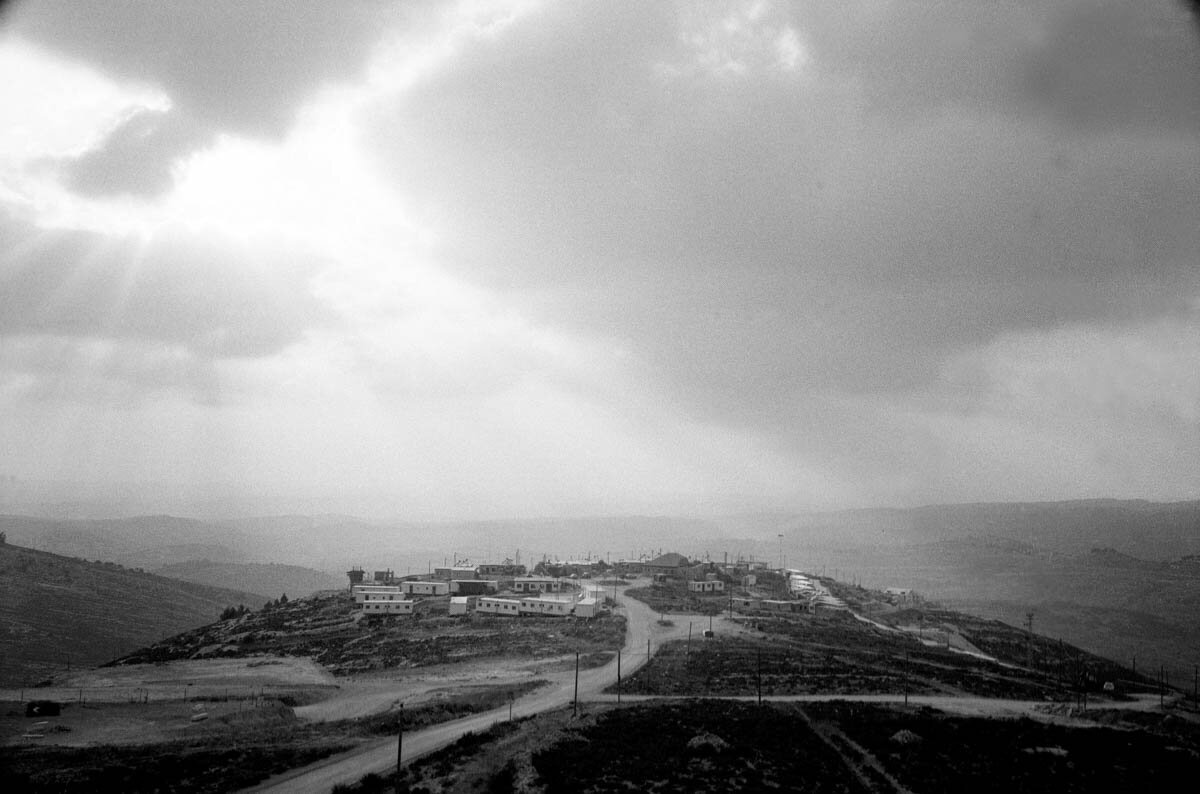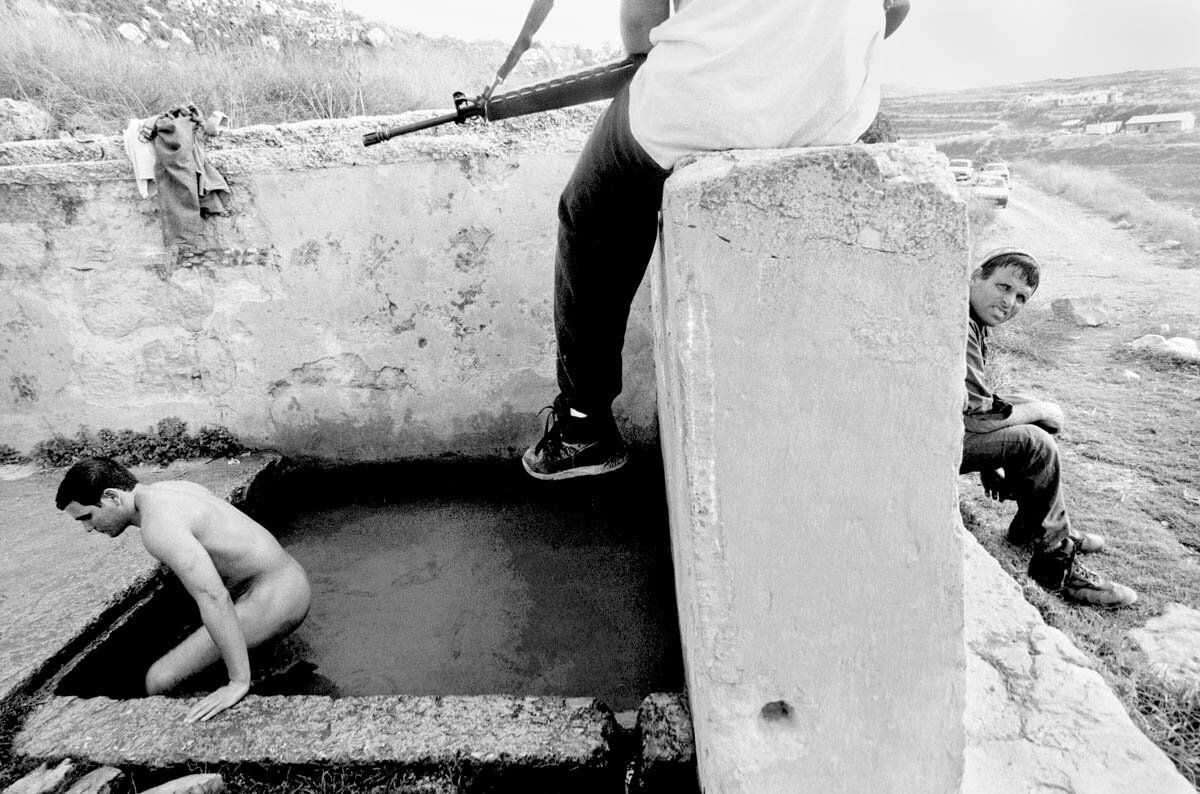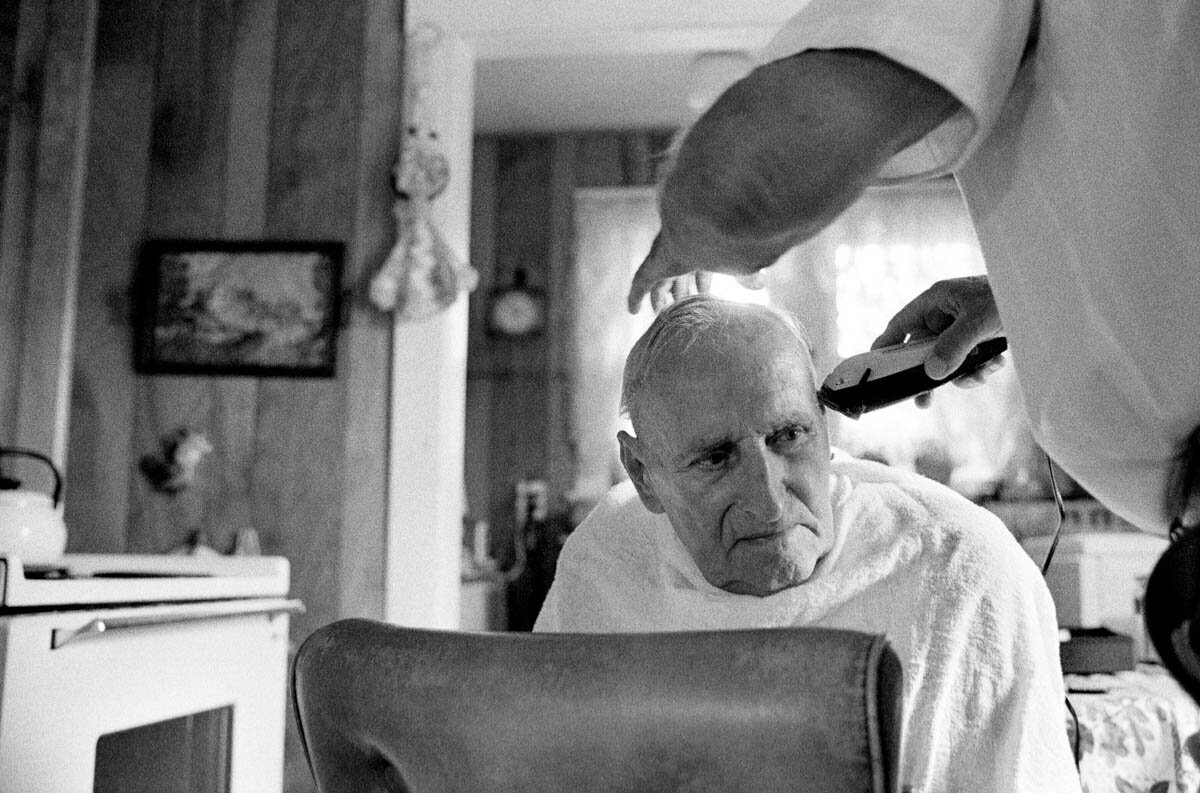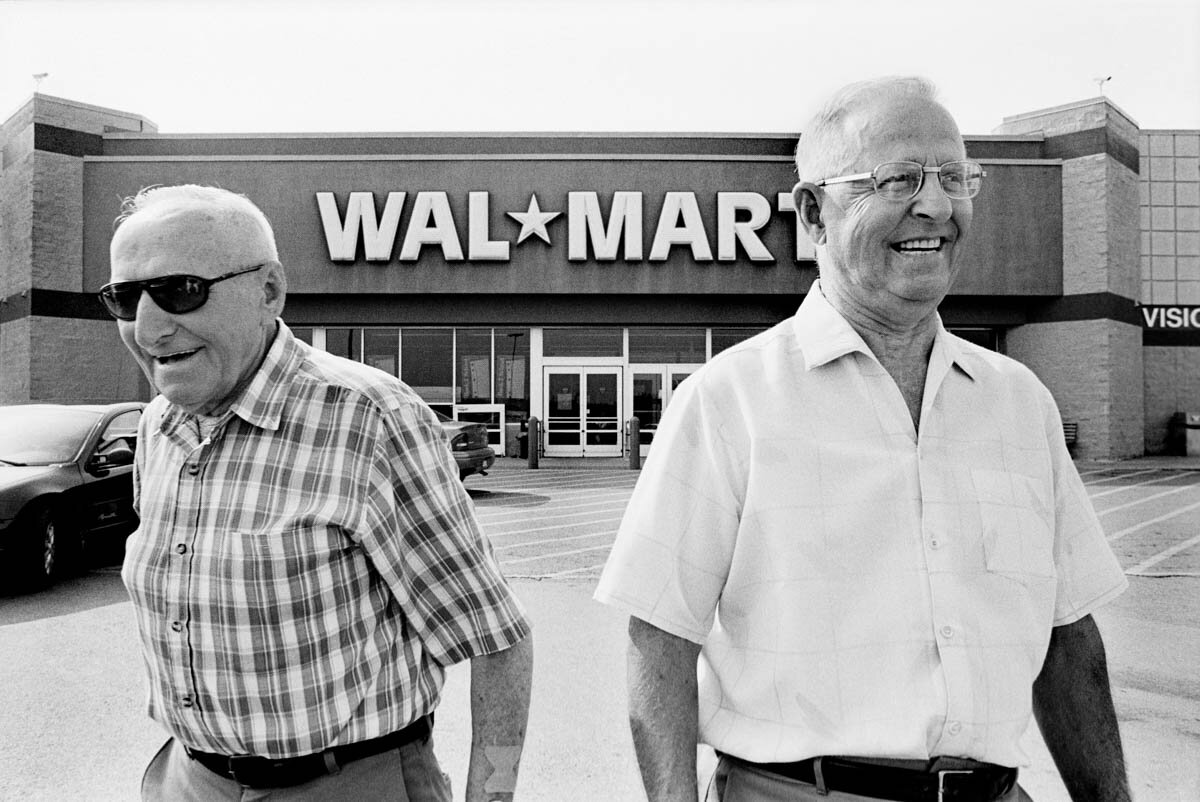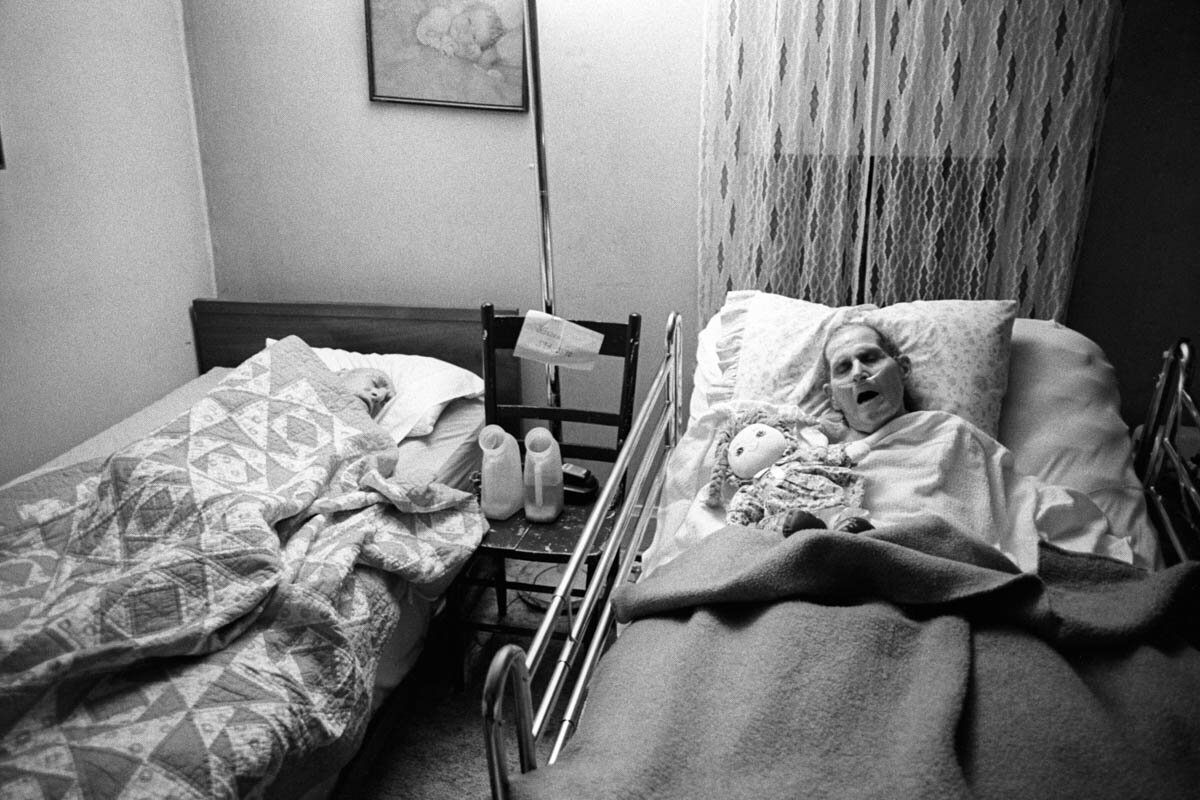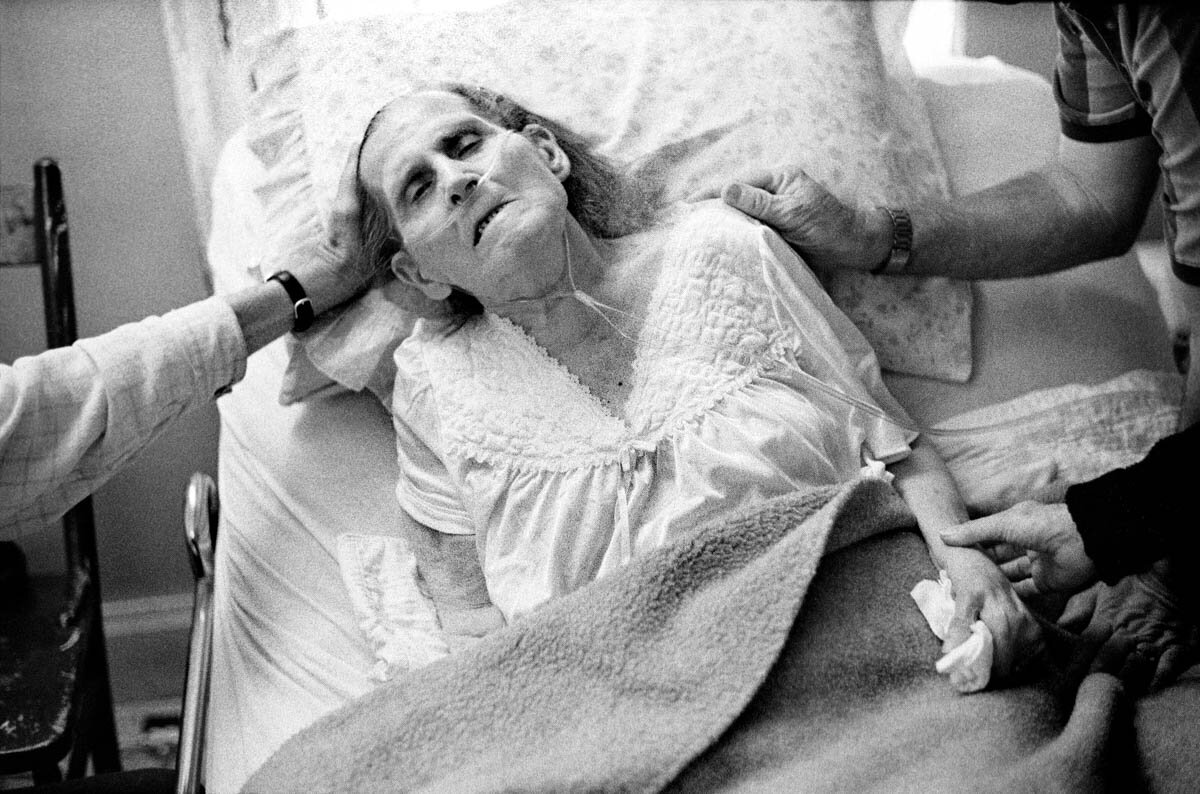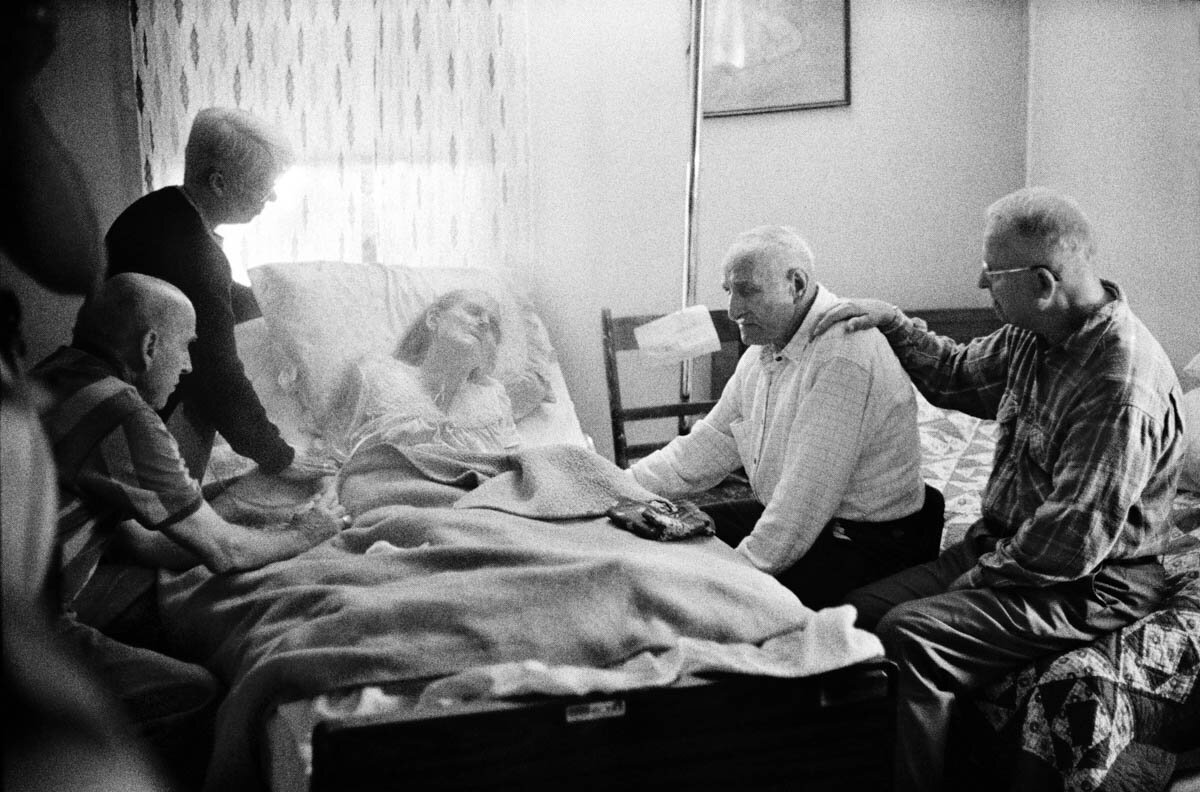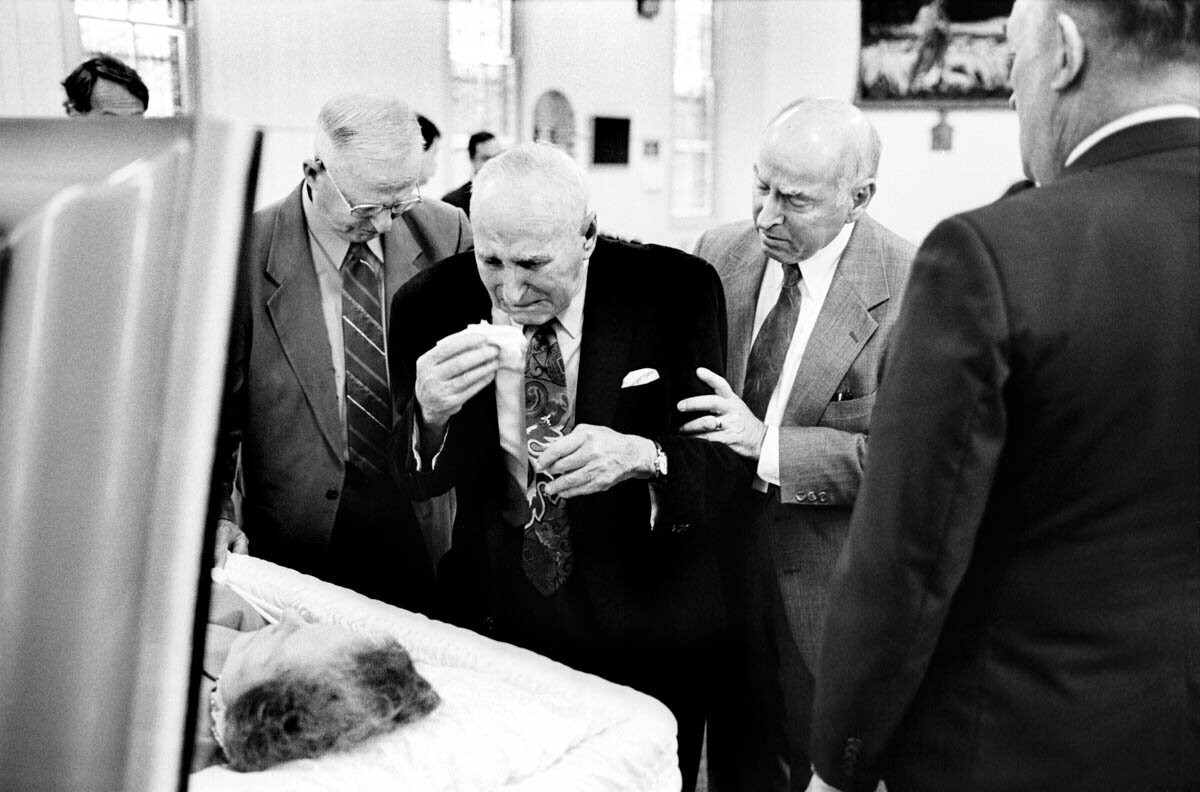In 1995 I published this piece in Salon about photographing messianic Jewish settlers in the West Bank. At the time, Salon was a pioneer in the world of online journalism. It was one of the first digital media outlets that focused solely on online distribution, so I felt as though I was entering new and uncharted territory for journalism and visual reporting. I had returned many times over a period of three years to photograph two specific communities: one militant enclave in the Arab city of Hebron and another called Bat Ayin – a newer, smaller settlement five miles from Bethlehem. I gained their trust and they let me into their lives. I lived inside their houses while I was there. One man even moved his daughter out of her bedroom so that I would have a private space of my own – sometimes for weeks at a time.
These were people to whom privacy was extremely important, but they let me see things that most other journalists were never allowed to see. Although I had been working on this project intermittently over three years, I was far from finished. It was a finalist for the W. Eugene Smith Grant in 1996, which only strengthened my resolve to continue traveling to Israel and Palestine to make the project deeper and more intimate. I was confident that a story as important as this one needed to be pursued. So confident, in fact, that I wrote this in the aforementioned article: “I plan to return to the West Bank at least twice a year for the next few years to record the settlers’ reactions as the West Bank is relinquished to the Palestinians. No matter where the peace process leads, the ‘true believers’ of the West Bank will remain a community with a powerful story to be documented.”
Things did not work out as I predicted. The West Bank has not been relinquished to the Palestinians, quite the opposite, and the peace process can no longer be described as such. But those weren’t the only things I was wrong about. One day, a few months after the piece in Salon was published, I arrived back in Hebron to continue my work with the settlers. The same man who let me sleep in his daughter’s bedroom met me outside the settlement. He handed me a printout of the article I had written for Salon and said: “You’re done here. You cannot work with us anymore.” And just like that, my project was over.
This is what I wrote that so angered the settlers: “As the assassination of Israeli Prime Minister Yitzhak Rabin has shown, militant Jewish settlers in the West Bank present a formidable obstacle to the country’s quest for peace with the Palestinians. While Hamas and other Arab terrorist groups wage war on the peace process from without, a group of extremist Jewish settlers, unmoved by their government’s policies or public sentiment, are waging war within.”
I stand by those words. Their truth is reflected in what has happened over the past 20 years, and they also accurately reflected my interpretation of what was, and still is, happening. My frankness destroyed my access and I was left at a standstill. Not only would the work remain forever incomplete, I also felt disgraced. They accused me of being cheap and of selling them out. They thought I was a liar, and I couldn’t help but dwell on this most personal feeling of shame.
I still feel torn about my decision to publish those words in Salon. The benefit of hindsight has not been much of a benefit at all. While part of me wishes I had been more circumspect about publishing my personal opinion, there is another part of me that stands firm behind being candid about my beliefs, particularly on an issue such as the Israeli-Palestinian conflict. My point in recounting this story is not, however, to draw conclusions about what I should or shouldn’t have done. Rather, it is to point out the inherently complex nature of human relationships – in this case as it pertains to my role as a photojournalist and documentarian. What happened to me is a prime example of what can happen when people let you into their lives, which is my overarching goal with potential subjects. At the time, the feeling of having been bitten by the internet seemed cruel and novel. The ability to see everything an individual publishes anywhere in the world has created a system where we now have to assume that our subjects will see everything we publish. I welcome this development, even if it sometimes puts a crimp on our ability to work as freely as we had been able to in the past. It has made relationships with subjects even trickier to navigate than before, but in general, more accountability and transparency in our process is a positive development.
As you get closer to the people you photograph, the process become more complex – something we don’t seem to talk about enough in our field. I’m in the early stages of developing a new project that will require intimate access to a married couple who have been separated for the past 12 years while the husband served a 25-year prison sentence for murder. He was released only two months ago and we’ve been spending time getting to know each other. Forging a relationship of mutual trust and respect is without question the most important aspect of making this project succeed.
This process of intimately connecting with your subject is near impossible to teach. If you are someone who wishes to delve into projects, themes, issues or stories of any kind, it is critical to remember that you will only succeed if you maintain the trust of your subjects. The world of journalism, to say nothing of the world as a whole, is badly in need of people who are willing to do this kind of in-depth work. It is impossible to include every detail and point of view in the stories we tell, but the subtleties and nuances of these stories have a much better chance of being understood if you spend extended periods of time fleshing them out. It is an incredibly rich part of being a visual storyteller, and it is one of the main reasons I continue to push forward. It has arguably never been more challenging to do this kind of work. The disruption within the editorial world caused by the digital revolution, the advent of the 24/7 news cycle and, most recently, social media mania, have all contributed unique obstacles to documentary storytellers.
When you are successful, the results go far beyond a meaningful photo essay. It is an incredible privilege to witness so much of life, to explore, and become a part of the vastness of the human experience. A profound illustration of this in my career is Aging in America: The Years Ahead. It was a project about how a society is growing old, so it involved finding people who were willing to let me into their most private and at times vulnerable situations. Many powerful events happened between the moment I met a new subject and the moment their story ended. I was privileged to photograph four deaths for Aging in America, but I was only able to do so because I developed trust.
In 2000, I met Maxine and Arden Peters, who were living in a farmhouse in rural West Virginia. They were both ninety and had been married for seventy years. Maxine was a tough lady who was fighting the end stages of Parkinson’s disease. With the deterioration of her body, the quality of her life had become abysmal, so Arden’s dear friend Warren de Witt came to live with the couple in order to help care for her. I had been staying with the Peters’ for a few weeks in October of 2000 when one morning it became apparent that it was Maxine’s time to pass. Arden seemed to be struggling with how to handle his wife’s suffering, so I took him aside and assured him it was okay to tell Maxine that she could let go. I’m not sure what his exact words to her were, but she passed away an hour and a half after he shuffled into their room. My head was swimming and my heart was pounding the whole time. I couldn’t help but wonder: ‘What gave me the right to intervene like this? Who was I to tell Arden what to do at such a pivotal moment?’
When you make the commitment to develop and maintain a relationship with your subjects in order to get access, it is essential to create trust, cooperation and collaboration. However, in a case like Aging in America, you’re also taking on more than that. You need to be prepared to stand up when these kinds of moments happen and act as a human before acting as a photographer. Later on, Arden invited me to the funeral to speak to the church congregation. He appreciated my intervention in that crucial moment. Being welcomed into the church by this close-knit community was one of the most powerful moments of my life.
The message I wish to convey is that you take on a tremendous amount of responsibility when you do this kind of work, but therein lies the importance of being a visual storyteller. If you have the ability to assume this responsibility, your work will benefit on every level. It will be more powerful to the people who look at it because it will be deeper, which also holds true for your personal experience. Our lives move at a blinding speed now, so it is crucially important that we as visual storytellers take the time to slow things down: to notice the details and stay in it for the long haul. We must listen to our subjects and give them time to express their voices, which sometimes means being a companion to them. A lot of life happened before I was able to get to that most intimate moment with Maxine and Arden. Much of the time was spent going on drives, photographing her being cared for, sharing memories and stories late into the evening, and just hanging out in the house doing nothing. These moments were precious and they showed the Peters’ that I cared for them and understood their dignity. It was a privilege to spend time with Arden and Warren and to witness the care that they provided Maxine and how beautifully their community supported them. I became part of that community for a brief period of time, which allowed me to photograph them in ways a complete outsider never would have been able to do.
In today’s world our lives are increasingly being played out in real time on social media. But there is another parallel universe where life moves slowly: in actual real time. It is important, perhaps now more than ever, to inspire more people to pursue the kinds of long-term projects that reflect the intricacies of human life. It is crucial to understand that learning how to maintain relationships with your subjects is an essential component to making this kind of documentary and photojournalistic work. Accessing private moments in other people’s lives is magical. But more importantly, it is what leads to memorable, intimate images that go beneath the surface and reveal a unique part of the human experience.
- Ed
Edited by Gabriel Ellison-Scowcroft

